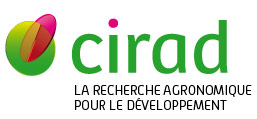Comparative performance of two crop management sequences in a cocoa estate in SĂŁo TomĂŠ
Bastide P., Neto Espirito Santo S., Prieur J.B.. 2005. In : 14th International Cocoa Research Conference. Proceedings : towards a sustainable cocoa economy - what strategies to this end ?. Lagos : Cocoa Producers' Alliance, p. 455-461. ConfÊrence Internationale sur la Recherche Cacaoyère. 14, 2003-10-13/2003-10-18, Accra (Ghana).
The State of Sao TomĂŠ and Principe acquires a large proportion of its resources from cocoa exports. Production is currently less than 4,000 tonnes. In 1999, following a land redistribution programme, cocoa was produced by small farmers, mediumsized companies and six large agricultural companies under private management. One of these companies, SocatomĂŠ, covers a total area of 2,500 hectares. In collaboration with CIAT, it decided to compare 2 types of technical yield itineraries between 1997 and 1999 to compensate for the low yields being experienced. The hybrid planting material came from different geographical origins: CĂ´te d'Ivoire, Cameroon, Gabon, Nigeria and Sao TomĂŠ. 28 sites or plots were selected within the plantation, itself divided into 2 operational sub-units, to take account of the variability of these geographical origins. Two types of plot are compared at each site: - Control plots where standard maintenance (cleaning, suckering, plant health treatments) are identical to the maintenance specified for all the company plots under production. - Garden plots where a specific, intensive technical itinerary is applied. A complete set of agronomic knowledge and cultural control is implemented. In both cases the fruit is harvested on a monthly basis and weighed and all losses are identified: these concern in particular damage due to Phytophthora spp, Selenothrips rubrocinctus, Bathycoelia thalassina and pests. The results reveal a significant improvement in yields of marketable cocoa per hectare when the Garden type technical itinerary is used. The differences also come from the origin of the planting material and the pedoclimatic environment. In addition, the high number of fungicidal and insecticide treatments on the Garden plots considerably reduce the average loss rate, from 40% to under 15%. The influence of both the technical itineraries on the weight and number of fruits per tree and the bean weight per pod is also studied. Finally, annual maintenance
Mots-clĂŠs : theobroma cacao; intensification; pratique culturale; engrais phosphatĂŠ; rendement des cultures; composante de rendement; analyse coĂťt avantage; sao tomĂŠ-et-principe
Documents associĂŠs
Communication de congrès
